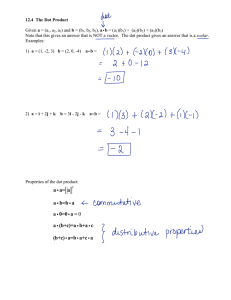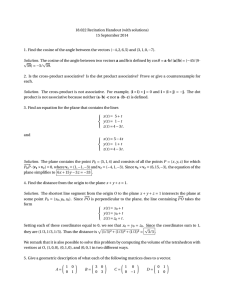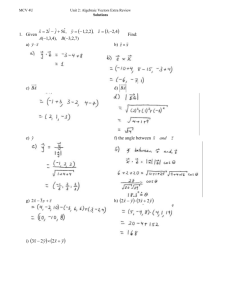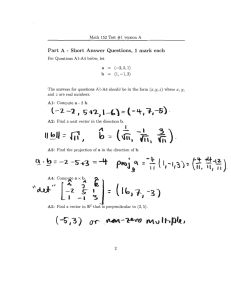18.022 Recitation Handout 15 September 2014
advertisement
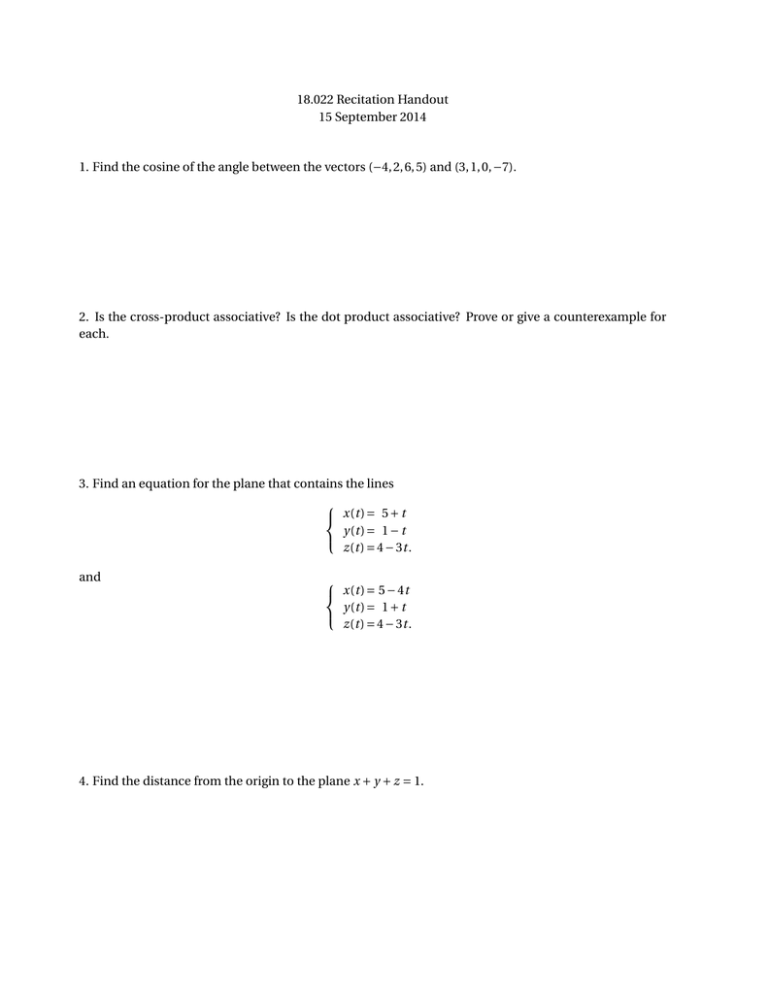
18.022 Recitation Handout 15 September 2014 1. Find the cosine of the angle between the vectors (−4, 2, 6, 5) and (3, 1, 0, −7). 2. Is the cross-product associative? Is the dot product associative? Prove or give a counterexample for each. 3. Find an equation for the plane that contains the lines x(t ) = 5 + t y(t ) = 1 − t z(t ) = 4 − 3t . and x(t ) = 5 − 4t y(t ) = 1 + t z(t ) = 4 − 3t . 4. Find the distance from the origin to the plane x + y + z = 1. 5. Give a geometric description of what each of the following matrices does to a vector. µ A= 1 0 0 1 ¶ µ B= 3 0 0 3 ¶ µ C= 1 0 0 −1 ¶ µ D= 0 1 1 0 ¶ 6. What matrices have the following geometric descriptions? (a) reflect across the x-axis (b) reverse the direction of the vector and double its length (c) halve the length of the vector (while preserving the direction) (d) rotate a vector 90 degrees counterclockwise (e) project a vector in R3 onto the x-y plane 7. The volume of a parallelepiped is the product of the area of its base and its height. Consider the parallelepiped spanned by a, b, and c. You may suppose for simplicity that b, c, and a form a righthanded triple of vectors, which means that a right-handed screw rotated an angle less than 180◦ from b to c advances in the direction of a. (a) Let us think of the parallelogram spanned by b and c as the base of the parallelepiped. What is the (signed) area of this parallelogram? (b) What is the height of the parallelogram, in terms of a and the unit vector pointing in the direction of b × c? (c) Put together parts (a) and (b) to derive the triple scalar product formula for the volume of a parallelepiped. 8. (Fun/Challenge problem) It is possible to prove the vector triple product formula a × (b × c) = (a · c)b − (a · b)c in a tedious way using coordinates. This problem outlines a more conceptual proof, taken from a note written by William C. Schulz. (a) Use the paralellepiped interpretation of the triple scalar product to show that b · (c × n) = c · (n × b) = n · (b × c) (b) Use the right-hand rule to observe that if c is perpendicular to n, then n × (c × n) = |n|2 c. (c) Show that it suffices to consider the case where a, b, and c form a basis for R3 . (d) Write a × (b × c) as a linear combination of a, b, and c, so that a × (b × c) = κa + λb + µc, (e) The easiest coefficient to determine is κ. What is it? (f) To find λ, dot both sides of (1) with c × n, where n := b × c. (g) To find µ, dot both sides of (1) with b × n, where n := b × c. (1)
